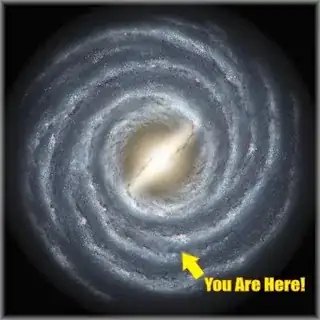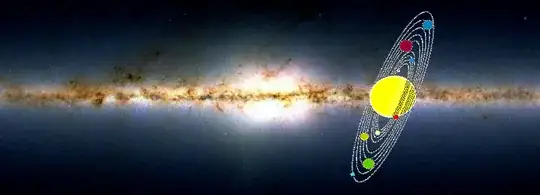The cosmological principle is that the universe is both homogeneous and isotropic on large scales -the last meaning that it looks the same in every direction.
This principle has been extensively tested and holds up pretty well (there are some debatable anomalies in the cosmic microwave background that are suggested anisotropies, but they are small).
Therefore we must assume that the expansion is isotropic too and therefore whichever way the solar system is oriented - and you can define an axis using the spin axis of the Sun - it has no "special" direction.
Edit: This next part was inserted because the question was edited to ask whether there was alignment of the solar system and galactic disk. It has since been changed back...
That includes within our Galaxy. The "ecliptic plane" is the plane that the planets (approximately) orbit the Sun. As you can see in the pictures below, we are not in a special position with respect to our Milky Way galaxy and neither are the planet orientations anything special. Note that the pictures are not to scale! And that we cannot see our own Galaxy from the "outside"! (Credit:
http://www.scienceminusdetails.com/2012/06/is-solar-system-tilted-sideways.html )
A nice way to confirm this with your own eyes is to go outside tonight at about 1am (NB this was written 22/11/2014) and look towards the East (assuming the sky is clear and you are in the northern hemisphere). You should be able to spot the planet Jupiter rising and it is between the zodiac constellations of Leo and Cancer. If the solar system plane was lined up with the galactic plane, two things would be true. (i) The planets would always be seen against the background of the Milky Way, which marks the disk of our Galaxy and (ii) the signs of the zodiac, marking the path of the Sun around the sky over the year (the ecliptic) would follow the Milky Way. Neither of these things are true; you should see that the Milky Way rises up into the sky from the south and lies about 50 degrees from Jupiter and well away from Leo and Cancer. (Leo is quite easy to spot).
Top view

Side view (not to scale!) showing orientation of the solar system.


